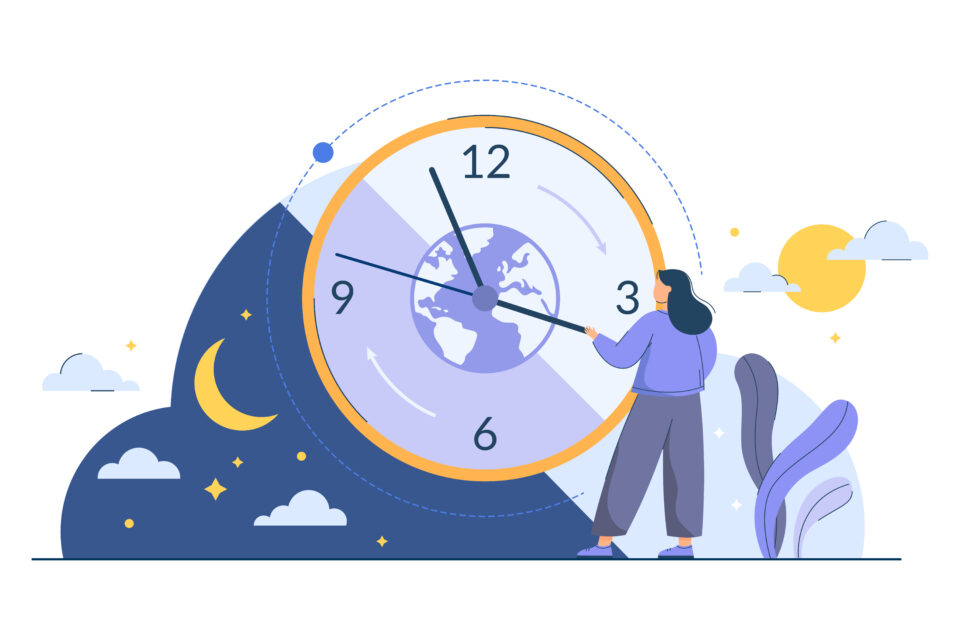
Is Daylight Savings Still a Thing?
As we gear up to twirl our clocks forward on March 10, the age-old debate resurfaces: Is Daylight Savings Time still a thing? The most common groan echoing through households is a timeless complaint: “Why do I have to go to bed when the sun is still up?” Before jumping into the Sleepy Skeptics’ and the Sunshine Supporters’ perspectives, it’s important to know where Day Light Savings (DST) came from.
It’s Not About the Farmers?
Let’s tackle the kiddos’ burning question: Why exactly do we have Daylight Saving Time? A common tale spun through the generations was that we have DST to help the farmers with their harvest.
But wait, hold the hay bales! History.com states this isn’t true because “farmers have long been opposed to springing forward and falling back, since it throws off their usual harvesting schedule.”
So, if not for the farmers, why the fuss about “Springing Forward” and “Falling Back?” DST focuses on energy saving and squeezing the most out of our natural daylight. The idea is to have more useful daylight when people are actually awake and out and about, potentially reducing the need for artificial lighting and heating.
The Sleepy Skeptics
One of the arguments against a year-round DST is that having more daylight promotes safety and health. When there is light outside during common commuting hours, it could lead to fewer car accidents and pedestrian-related accidents because people can see better.
Moreover, economists Jennifer Doleac and Nicholas Sanders found that “DST lowers robbery rates by 7 percent, with the largest result occurring during the hours most affected by the shift in daylight.”
It’s argued that having an extra hour of sunlight makes the streets safer for joggers, pet owners walking their dogs after work, and children playing outside. And, the extra hour gives way to more outdoor activities and is better for the economy because consumers have more time to shop and spend money.
Finally, and one of the most common arguments, is that it could mess with our internal clock (circadian rhythm), causing a circadian calamity. The circadian rhythm is our body’s natural clock that regulates when we feel alert and sleepy by responding to light changes in our environment.
“Many regions of the world already follow the wrong time during standard time, and circadian misalignment would be amplified by moving to permanent daylight saving time,” explains the National Institute of Health. “Standard time better aligns with our circadian clock, thus providing a more natural light cycle that minimizes circadian misalignment.”
The Sunshine Supporters
On the other hand, the Sunshine Supporters argue that changing the clock every year can have negative health consequences. Sleep Education argues that the “annual change from standard time to daylight savings time is associated with increased risk of heart attacks and strokes.”
Regarding quality sleep, it’s argued that the one-hour time shift during DST disrupts the circadian rhythm because there is less light in the morning but more at night. This can cause chronic sleep loss and potential health implications.
“The transition between DST and Standard Time has darker morning and more evening light. This can essentially ‘delay’ your sleep-wake cycle, making you feel tired in the morning and alert in the evening,” states the Sleep Foundation.
Furthermore, in 2017, a study discovered an 11 percent rise in depressive episodes when transitioning from daylight saving to standard time.
Another argument against changing the clocks twice a year is that it drops productivity. “Sleepy Monday,” the day after the clock change, tends to be the most sleep-deprived day of the year because the sleep schedules have changed.
With the health effects and lack of productivity, the Lost-Hour Economic Index reveals that nationally, the shift during DST resulted in a cost of more than $434 million. “To figure out these numbers, we looked at how the time change can lead to an increase in heart attacks, workplace injuries in the mining and construction sectors, and increased cyberloafing in offices,” explains the Lost-Hour Economic Index.
Time-Warp Wrap-Up
All in all, there are strong arguments to keep changing the clocks twice a year and reasons why we shouldn’t. But now that we’ve stopped blaming the farmers for the time change, are you a Sleepy Skeptic or a Sunshine Supporter?

